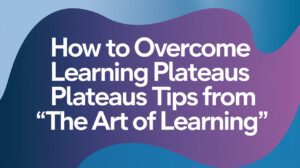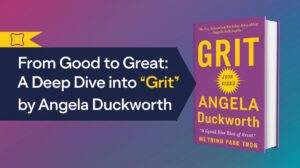One of the best methods for building wealth over time involves investing. Unfortunately, many people have a misconception that this process requires a huge sum of money upfront. Fortunately, with proper strategies and advance tools, you can start little and begin growing your money in your investment. This starter guide takes you through that process-step by step-as you make decisions that will give you a good foundation for a secure financial future.
1. Why Invest Early?
The power of compound interest will help your money grow much more when invested early. Compounding is when the earnings on your investments generate their own earnings. Even with small amounts, the growth in the rate of time can be huge. For example, $100 a month invested at an average annual return of 7% will grow past $120,000 in 30 years.
Key Takeaway: The sooner you start, the more time compound interest pays off.![]()
2. Know Your Financial Standing
Before investing, it is of paramount importance to know your current financial standing. Take a keen look at your income, expenses, debt, and savings. You should have an emergency fund, preferably three to six months of living expenses, before investing. This will ensure that you will never use your investments in case there arises an unexpected need for money.
How to Assess Your Finances:
- Write down your monthly income and expenses.
- Eliminate high-interest debt-most importantly, credit card debt.
- Stockpile an accessible savings account to cover three to six months of living expenses.
Key Takeaway: The sounder you are all over when you start investing, the fewer risks you’ll have to take.
3. Setting Investment Goals
Your goals will be the guiding force for your investment strategy. Are you investing to retire, put down on a house, or fund your child’s education? Your goals will determine your time frame and risk tolerance. Generally speaking, longer-term goals can afford higher risk, while short-term goals should be focused on preserving capital.

Questions to Consider:
- What am I investing for?
- When will I need the money?
- How much risk am I willing to take?
Key Takeaway: Clear objectives guide appropriate selection of investment vehicles and methods.
4. Types of Investments for Beginners
There are various types of investments, with each having its own risk/return profile. A beginner who has limited funds may want to consider the following, which constitute some of the most accessible and low-cost options:
Stocks
Stocks are ownerships of a company. This is because if one buys stock, then they become a shareholder of the company because they will have a part of it. Stocks offer higher returns, but also present a higher level of risk than the rest of the types of investments.
ETFs
Exchange-Traded Funds are a way to assemble a collection of various stocks or bonds into one investment and then trade them on an exchange just like a stock. This spreads diversification, as their content usually reflects a number of different assets. This may reduce risk.

Mutual Funds
Mutual funds take money from many investors and invest the accumulated sum in a well-diversified portfolio of stocks, bonds, or other securities managed by professional portfolio managers. They become suitable for an investor who does not desire to be much involved with his investment.
Bonds
Bonds are loans to corporations or governments that pay periodic interest along with the return of the bond’s face value at maturity. Bonds are normally less risk than stocks and a good vehicle for conservative investors.
Key Takeaway: Start with investment types that are consistent with your risk tolerance and financial goals.
5. How to Start Investing with Little Money
You don’t have to have thousands of dollars to begin investing. Here are a few ways you can get started small:
Micro-Investing Apps
The microinvestment platforms, such as Acorns and Stash, even Robinhood, will have you start investing for a few dollars. Many of the apps allow you to invest loose change or small sums of money on a regular basis. They’re easy to use and more for the beginning investor.
Robo-Advisors
Robo-advisors provide automated services where a diversified portfolio is built on your behalf based on your risk tolerance and goals. The services offered by Betterment and Wealthfront are ideal for beginners as they require lower initial investments.
Employer-Sponsored Retirement Plans
If your company offers a 401(k) or other type of retirement plan, you can begin to invest with modest deductions from your paycheck. In many cases, your employer will match these contributions dollar-for-dollar, which is, quite literally, free money for your investments.
Dividend Reinvestment Plans
DRIPs allow you to take dividends of stocks you own directly and reinvest them into more shares, many times commission-free. This could be a really powerful way to grow your investments over time, even with small amounts.
Key Takeaway: Low-expense investing platforms allow one to begin building his portfolio, even on the smallest scale.
6. Diversify Your Investments
Diversification is the method of lessening investment risk by apportioning among different asset classes, such as stocks, bonds, and real estate. If one investment in your portfolio does poorly, others might do well, evening out your returns.
How to Diversify:
- Invest in a mixture of stocks and bonds among other assets.
- Consider an ETF or mutual fund; you get instant diversification.
- Periodically review and rebalance your portfolio.
How It Works: Diversification protects your investments from the risks associated with market volatility.

7. Errors to Avoid
Starting off with less money, there are a number of traps that one may fall into. Some of the common mistakes to avoid include:
- Doing Inadequate Research: Understand the investment product before you put your money in.
- Timing the Market: Buying low and selling high is very risky; instead, focus on long-term growth.
- Being Complacent About Fees: High fees will slice into your returns; hence, go for low-cost investment options.
- All Eggs in One Basket: Never put all your eggs in one basket, meaning placing all your money in one asset or stock.
Key Takeaway: Learn about common pitfalls and educate yourself to have maximum investment success.
8. Top Books to Learn More About Investing
Investing is a learning process. Here are highly recommended books for beginners by experts:
- “The Little Book of Common Sense Investing” by John C. Bogle
Excellent primer on index funds and long-term investing. - “The Intelligent Investor” by Benjamin Graham
A classic investment book, which imparts the essentials of value investing. - “Rich Dad Poor Dad” by Robert Kiyosaki
A well-read book, which impresses upon the reader the importance of financial education and, importantly, investing. - “Your Money or Your Life” by Vicki Robin and Joe Dominguez
The book stands as a guide to help you understand the relationship between your money and your life to lead to financial independence.
Key Takeaway: Arm yourself with knowledge to make intelligent choices as an investor.
9. Conclusion
Investing with a small amount of money is not only possible but also wise; it’s a step toward securing your financial future. Understand your finances and set clear goals, strategizing on the best ways to invest. That way, you can start building your wealth even on meager resources. Remember, patience, discipline, and continuous learning are the keys to successful investing.
Closing Thoughts: Never wait for that “perfect” moment in order to invest. It is always better to begin investing right now, even with the smallest amount.








2 thoughts on “How to Start Investing with Little Money: A Beginner’s Guide”